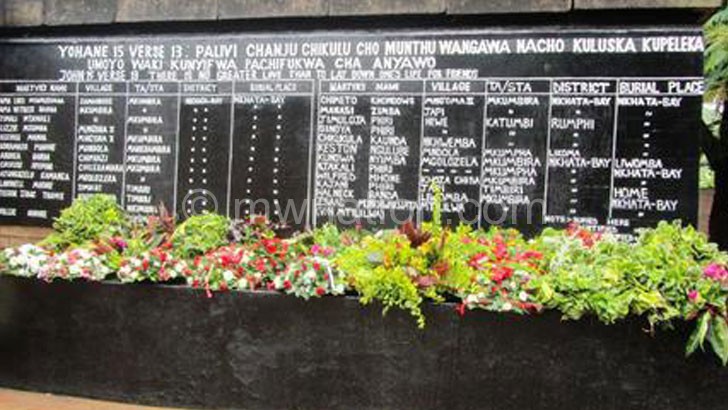Of MG1 processions and road carnages
Honourable folks, today I feel obliged to re-examine the bloodbath on our roads. This coincides with the death of two Malawi Defence Force (MDF) soldiers in a horrific accident involving President Lazarus Chakwera’s convoy in Blantyre this week.
The deceased corporals were part of the rear guard providing a defensive buffer for the presidential motorcade on its way from Lilongwe until their Toyota Land Cruiser veered off the sloppy Magalasi Road and rammed into a nearby brick fence.
Allow me to pay tribute to these two souls and extend my heartfelt condolences to their families for their costly loss. I also wish their colleagues who survived the crash a speedy recovery as they recuperate in hospital.
But Monday’s accident is not unique. It follows a wave of similar disasters involving the presidential convoy that has killed and injured many presidential escorts and civilian road users.
Yes presidential convoys are the ‘safest and fastest’ but now we are seeing that they are also the riskiest and pose a big threat to Malawian road users going by a few ‘documented’ cases since the 2000s.
During ex-president Bakili Muluzi’s rule, his convoy was involved in some accidents, including the January 2004 pile-up in Blantyre that injured three of his bodyguards and former presidential affairs minister Ken Lipenga.
Muluzi was returning from a campaign rally in Kasungu ahead of the 2004 general elections and after alighting from a military chopper at Chileka International Airport, he boarded his usual super-long convoy en route to Sanjika Palace. However, along the way a lead police car skidded on wet tarmac following heavy rains, causing Muluzi’s Mercedes Benz to ram into it leading to the near fatal pile up.
In 2005, Phyllis Mautanga successfully sued the governments of Malawi and Libya for K9.5 million in damages following an accident in Ntcheu in 2000 involving her car and a high cruising Libyan-registered Land Cruiser that was trailing the convoy of Muluzi and ex-Libyan leader Muammar Ghaddafi who had visited the country and the leaders were travelling from Lilongwe to Blantyre by road.
In February 2012, 38-year-old Edwin Kagolo from Blantyre also died after being run over by a speeding vehicle on Bingu wa Mutharika’s convoy as the former president travelled from Sanjika Palace to his private mansion in Ndata, Thyolo.
Nine police officers from Zomba who escorted ex-president Peter Mutharika’s convoy to Machinga in 2014 also died in a horrific road accident when a police Land Cruiser pickup they were using missed the road at Chiyendausiku in Balaka and rolled several times.
Then there is one Bernard Nyasulu, a pedestrian who was killed at Bwengu Trading Centre in Mzimba last year after being hit by a high speeding vehicle on Mutharika’s convoy as he drove to wind up his fresh presidential election campaign at Rumphi Boma.
Certainly I am not blaming anyone for inventing the 160 km/hour maximum speeds for presidential motorcades on our dilapidated roads which are essentially death traps. But Malawi still needs urgent measures to curb this menace. Tonse ndi aMalawi ndipo ndizothekanso tonse kumvetsetsana bwino bwino apapa.
While we appreciate that VVIP drivers undergo regular defensive driving sessions, we must also bear in mind that most of our roads have lost value over time due to non-refurbishment meaning they are no longer speed friendly as they used to be 20 or more years back.
It is just sad that this latest accident happened after Chakwera had hinted on reviewing his security detail in October last year, including trimming his motorcade to 10 vehicles as a cost-saving measure. We are still waiting to see how these issues; especially the motorcade size, will be addressed once and for all by those responsible at the State House, Malawi Police Service and the Ministry of Homeland Security.
Until we address this and other threats urgently Malawi will continue to lose its citizens on the roads which are already yawning death traps




